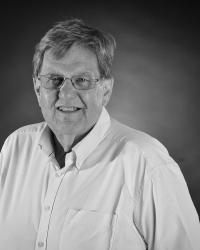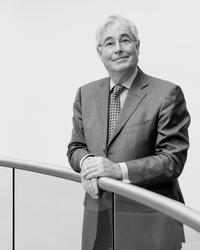2019 Winner's story
Josh at Honda
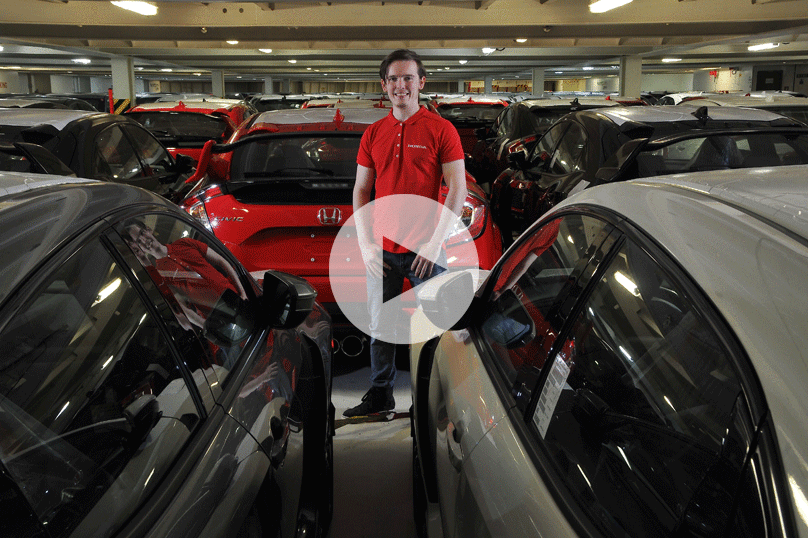
The penultimate station on Josh de Wit’s whistle-stop tour of the UK motor industry was in Bracknell, Berkshire, the home of Honda.
The mechanical engineering undergraduate and 2016 Autocar-Courland Next Generation Award winner covered a wide variety of departments at Honda and says it was one of his best placements yet.
The first department that Josh experienced was dealer development. “I started by conducting a mystery-shopper report on a Honda dealership,” he says. “Dealerships are selected for this every so often, to check the customer experience meets Honda’s high standards.”
Josh then went along to another dealership with Honda’s field team to see how relationships with dealers are managed. “The two dealerships were at completely different ends of the spectrum in terms of how they dealt with customers, which was very interesting to experience,” he says. “It’s all well and good engineering things, but they have to be sold effectively. Strategising the dealer network is a never-ending but important challenge.”
It wasn’t just cars that Josh worked with. He spent time with Honda’s divisions for all-terrain vehicles, such as quadbikes, and for motorcycles, and visited the marketing agency in London to see how the brand’s often ground-breaking ads are planned and produced.
He also attended the Hampton Court Flower Show with Honda Power Equipment to talk to customers about the Miimo electric autonomous lawnmower. “People were put off by the purchase price, but once we told them about the annual running costs of £12.50, they soon warmed to the idea,” he says.
Next up for Josh was commercial planning and market research. “It’s one thing to have the technical expertise,” he says, “but you also need the commercial expertise and to be able to manage your employees.” There was also time to visit aftersales and customer relations departments.
Josh then moved to the engineering and research and development side of things at Honda’s factory in Swindon, where the new Civic and the CR-V are built. “I found it interesting that engineering and manufacturing are conducted at the same site,” Josh says, “because they were separate at Nissan,” his previous placement.
After that, he spent a day at one of Honda’s main car export depots at the Port of Southampton, learning the processes behind transporting, documenting, storing and loading the cars, as well as where they were going and what the processes were at their destination. “It’s a huge operation and it’s great to see cars that were built in Britain and exported around the world,” he says.
Josh also got to drive several Honda cars, including the previous and new versions of the Civic Type R, one of which he demonstrated at CarFest North, and the new Clarity hydrogen fuel-cell car.
“There are challenges with hydrogen cars,” he says. “These include the very limited infrastructure for them, efficient production and storage of hydrogen and packaging within the vehicle. So as much as I appreciate the rare chance to drive such a car and was impressed with its refinement and power, I still think the future is in battery-electric vehicles.”
The biggest thing that Josh took away from his time at Honda is how “ethically driven” the company is.
“It’s not 100% about the money,” he says. “Soichiro Honda had this philosophy that if he saw something that wasn’t right, he would cut it, regardless of the market. For example, there was once a massive market for two-stroke engines, but he didn’t like their impact on the environment, so he made four-stroke engines instead. You’ll also never find a Honda chainsaw, because he didn’t like trees being cut down.
“The way employees are treated and the public image are also very important at Honda. I think ethics are key to a successful business.”
Josh’s next and final work placement will be at Toyota.
How to land your dream job
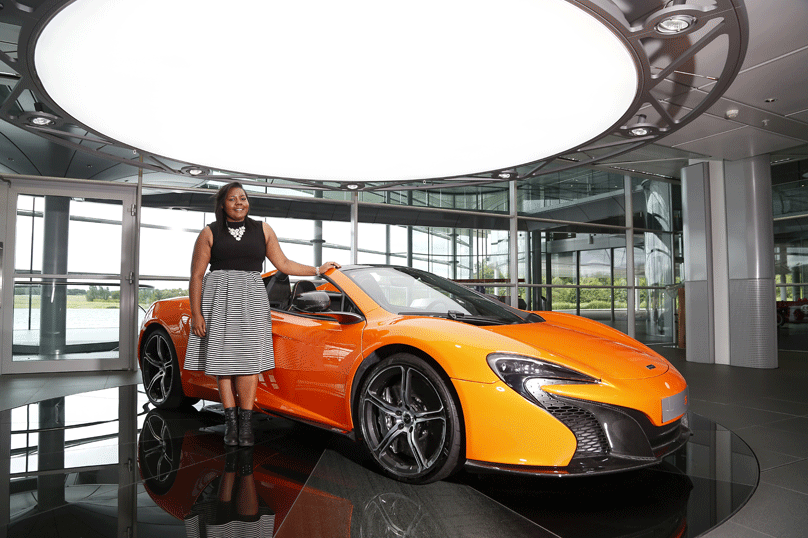
Winning the Autocar Courland Next Generation Award has propelled many young people on to successful careers in the automotive industry. We caught up with 2014 winner Nicole Agba, who is now a colour and materials designer at McLaren, to find out how she ended up back at the supercar manufacturer and how her experience of entering and winning the award helped get her there.
What did you do when you finished your Autocar Courland Next Generation Award placements?
My final placement was with Skoda in August 2015. When I finished that, I explored other creative opportunities as a freelancer and started a trend-forecasting blog called The Trend Tome. This experience eventually helped me get a role at the Advanced Propulsion Centre [which researches low carbon propulsion development and production] as a visitor experience designer, redesigning its exhibition space.
How did you end up back at McLaren?
I knew I wanted to get back into automotive and I was still so inspired by my Autocar Courland Next Generation Award placements. I started freelancing again and got back in contact with the team at McLaren, where I did one of my award placements in 2015.
Back then, I worked as an intern, supporting the senior colour and materials designer on the design of the McLaren 720S, as well as working within the advanced design team to develop future concept proposals.
All my manufacturer placements were amazing, but McLaren was my favourite. I stayed in contact and heard about an opportunity in the design department there. I had an interview at the beginning of this year and started my job six days later.
What do you do at McLaren?
I work in the design studio as a colour and materials designer. I’ve been working on colour and trim on a range of future products that will be launched as part of our Track22 business plan.
My main responsibility has been developing exterior body, caliper and alloy colours, as well as interior brightwork and leather.
I have to fulfil a brief, and what I’ve learned is how important it is for marketing, engineering and design to all work together to produce a world-class product. The cool thing about working here is that we don’t accept ‘no’ as an answer and we strive to be innovative and figure out how to make a great idea happen, no matter what the challenges.
What’s the best thing about your job?
It’s just an amazing environment to be able to work in; there’s such a buzz around the place. I’m grateful for the opportunity to work with such a supportive group; I’m constantly growing and learning and I’m excited to see what the future holds.
What’s your advice to people thinking about entering the award this year?
Do it. No matter how big or small or extravagant or simple your idea is, everybody should enter. It’s an incredible opportunity and it has helped me so much in my career.
Have you carried on working on your original award-winning idea?
My biometric steering wheel design is still something I would love to see go into production somewhere. It can monitor a driver’s heart and respiration rate for indications of fatigue, anger or nervousness, so I really believe it would be beneficial.
After the competition, I was approached by a lot of companies who wanted to work on it. I didn’t really have time to take it forward but I’ve been approached recently by more people interested in developing it. It would be cool to do something with it, but it needs a lot of investment. It’s just about finding the right business opportunity.
Josh at Nissan
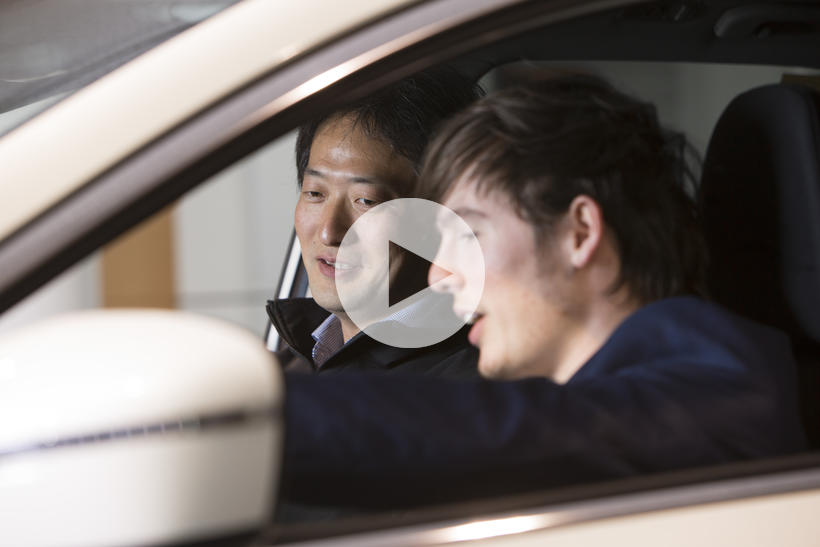
To see video from your mobile click here
The next spell of work experience for Josh de Wit, the 2016 Autocar Courland Next Generation Award winner, was with Nissan. The 22-year-old, who is a mechanical engineering student at the University of Sussex, worked with the manufacturer’s autonomous drive vehicle team at the Nissan Technical Centre Europe (NTCE) in Cranfield, Bedfordshire. NTCE develops vehicles for the European market and is part of Nissan’s Research and Development network.
Josh won the Next Generation Award for his design of a stacked graphene battery that could drastically shorten recharging times and maximise space and energy efficiency. His passion for future technology meant he was particularly excited to be working with Nissan, because, he says, the company considers there to be “three key areas in the future of the automotive industry”, namely “electric vehicles, artificial intelligence and autonomous drive systems”.
Josh was struck by the atmosphere at Nissan: “You’ve got staff from Japan and Britain collaborating really well, and it’s a great team to work in. Nissan’s Japanese origins shine through at Cranfield. Although I’ve never been to Japan, I really like the culture – they’re massively ahead when it comes to new technology.”
Josh de Wit’s next Autocar Courland Next Generation Award work placement will be with Honda.





